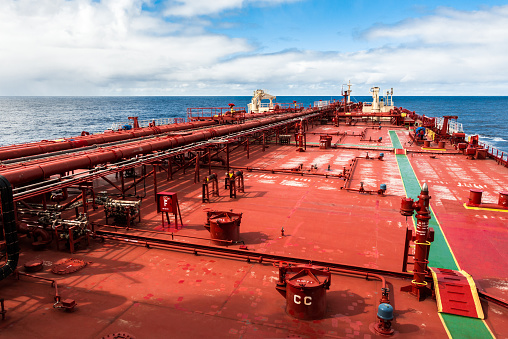Crude tanker owners are enjoying a dream run in charter rates as stretched voyages due to the Russia-Ukraine War and the Red Sea crisis have tightened the market, especially the mid-size tanker segments. While spot rates are expected to remain firm until 2026 amid tight supply, many charterers are now looking for period charters to avoid any further surge in rates, as reflected in the recent increase in time charter rates.
In the last six months, the one-year time charter rate for a non-eco Aframax vessel increased from $41,700 per day to $44,300 per day. Similarly, an increase in demand for long-term time charters has boosted three-year TC rates from 30,400 per day to 36,700 per day over the same period. Nonetheless, long-term TC rates are significantly lower than the 1-year TC rates, which signals a likely softening in rates after 2025 once supply starts improving.
Although the tanker market prefers spot employment, the share of spot or time charter employment is decided by the risk profile of shipowners and the market outlook. While the extent of exposure to the spot market decides the shipping company’s operating leverage, debt decides its financial leverage.
Risk-averse owners normally try to avoid a situation where operating and financial leverage are both high. Many listed companies reduced their financial leverage in the last two years as they used high profitability to reduce debts, especially when tonnage ordering was capped by the limited availability of slots with prominent shipyards. A sharp reduction in financial leverage gave them headroom to increase operating leverage. Accordingly, many owners increased their exposure to the spot market to benefit from high vessel earnings.
Vessel earnings are expected to remain high during 2024-25 because of tight supply, but any possible normalcy in the Suez Canal traffic will weaken freight rates. If any company plans to order vessels to expand or renew capacity, its debt burden will increase again. Therefore, it is advised to gradually bring down spot exposure towards normal levels from the current high levels.
Presently, long-term time charter rates are at attractive levels, and opting for time charter employment for some vessels will reduce the operating leverage, ensuring stable cash flow to serve debts. As rates are likely to decline post-2025, locking long-term charter for some vessels will ensure healthy cash flow for owners. Additionally, the long-term period charter will ensure employability during any possible oversupply situation in the market in the coming years.
Source: Hellenic Shipping News





